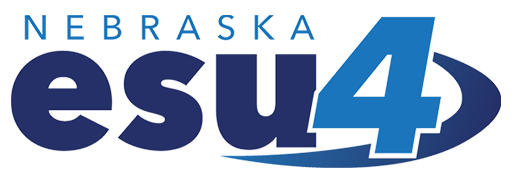5031: Student Appearance
General Regulations. The ESU prohibits student attire or appearance that:
- Causes or is likely to cause a material and substantial disruption to the ESU’s programs and activities.
- Promotes, depicts, or refers to violence, drugs, alcohol, vulgarity, obscenity, illegal activity, hate speech, bullying speech, or harassing speech.
- Includes words, gestures, or images that contain or imply sexual content or innuendo.
- Otherwise undermines the ESU’s mission to inculcate the habits, manners, and values fundamental to civility, community, and the educational environment. The ESU reserves the right to request immediate attire changes from students.
The ESU will require students to adhere to uniform standards and/or wear ESU approved or issued uniforms in order to participate in activities.
Altering a student’s appearance or removing or altering a student’s attire without consent from their parent/guardian/caregiver is not allowed. Additionally, students’ hair should not be permanently or temporarily altered by school personnel.
Cultural and Religious Attire. Students are allowed to wear religious attire, adornments, and other attire associated with race, national origin or religion, or tribal regalia. Additionally, students are permitted to wear natural and protective hairstyles including but are not limited to braids, locks, twists, tight coils or curls, cornrows, Bantu knots, afros, weaves, wigs, or head wraps.
Any person who is a member of an indigenous tribe of the United States or another country may wear tribal regalia in any public or private location where the person is otherwise authorized to be on school grounds or at any school function.
Health and Safety Considerations. Students may be required to wear protective clothing or equipment or otherwise modify their attire or secure their hair to ensure the safety of themselves and others. In such cases, a good faith effort to reasonably accommodate students will be made to ensure safety without compromising religious beliefs, grooming practices, or requiring students to permanently alter their appearance. The least restrictive means appropriate to address the identified health or safety concern shall be used.
Health and Safety Accommodation Process. If a health and safety standard accommodation is necessary, the ESU will:
- Engage in a good-faith effort to reasonably accommodate the student and
- Notify the student's parent or guardian of such an attempt to accommodate the student's appearance or any attire, tribal regalia, hairstyles, adornment, or other characteristic associated with race, national origin, or religion
- Attempt to obtain consent from a student's parent or guardian prior to altering a student's appearance or removing or altering a student's attire, tribal regalia, hairstyle, adornment, or other characteristic associated with race, national origin, or religion.
Recordkeeping. The ESU will record efforts made to accommodate a student’s appearance, attire, hairstyle, adornment, or other characteristics associated with race, religion, sex, disability, or national origin. Each record must include: the student’s name; federally identified demographic characteristics; date of the occurrence; the health and safety standard relating to the accommodation; the nature of the accommodation requested; staff involved; communication with parents/guardians/caregivers, and; the outcome of the effort.
Enforcement. Violations of this policy shall be addressed in a manner consistent with the board’s policies regarding student discipline.
Adopted on: June 8, 2009
Revised on: May 13, 2019
Reviewed on: January 9, 2012
Reviewed on: Sept. 11, 2023
Revised on: August 11, 2025
